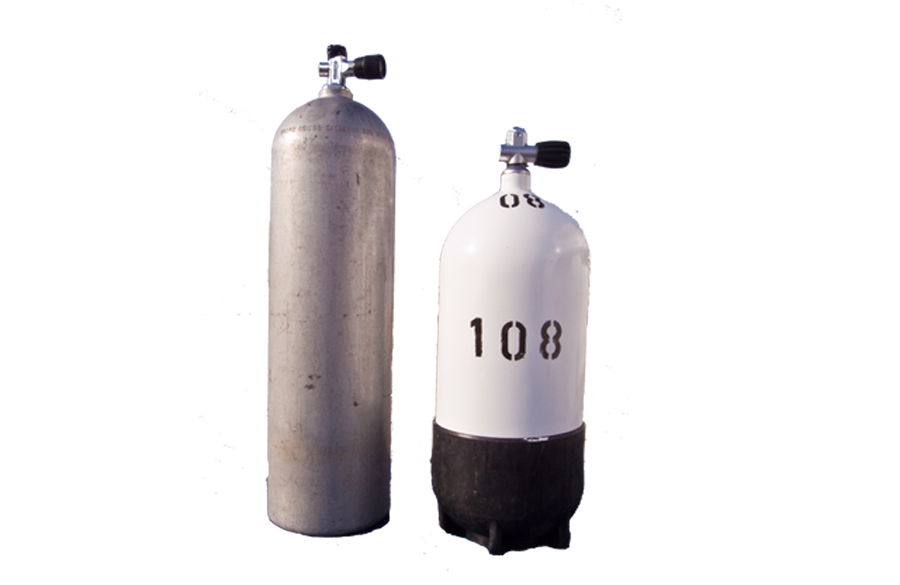ALUMINIUM VS. STEEL

Question: Why does an aluminium device need about 2 kg more lead than a steel device? The most common answer is: Because aluminium is lighter than steel. FALSE!!! The reason why we need about 2 kg more lead with the Alu device is explained by the law of good old Archimedes which says:
A body immersed in a liquid apperently loses as much weight as the amount of water it displaces weight.
What does this mean using the example of a 12 liter DTG (compressed air diving device)?
Before we deal with this question the follwing must be known.
Steel has a thickness almost 3 times higher than aluminium. As a result, the wall thickness of an aluminium DTG must be 3 x more to whitstand the same pressure. This means that an aluminium DTG is larger and heavier then a steel DTG.
A 12 liter steel DTG (empty, i.e. not filled) weighs about 14 kg and displaces a total volume of about 13 liters.
A 12 liter aluminium DTG weighs (empty, i.e. not filled) about 16.5 kg and displaces a total volume of about 17 liters.
When both DTGs are filled with 200 bar air mixture they weigh about 3 kg more.
(1 Liter of air weighs approx.1,25g equals 12 x 200 = 2400 x 1.25 = 3000g resp. 3 kg)

In the table it shows the effect of Archimedes when diving in salt water with a 12 l steel and 12 l aluminium DTG, filled with 200 bar and almost empty with 20 bar.
- It is correct, when diving with an aluminium DTG you have to carry about 2 kg more lead.
- The aluminium DTG is about 2.5 kg heavier on land than the steel DTG. With the consequence that the diver hast to carry more kg.
- The Alu DTG still has a small downforce under water, at the beginning of the dive.
- Towards the end of the dive the DTG has a lifting effect. This is then felt by the diver as an unpleasant «pulling up» at the back.
